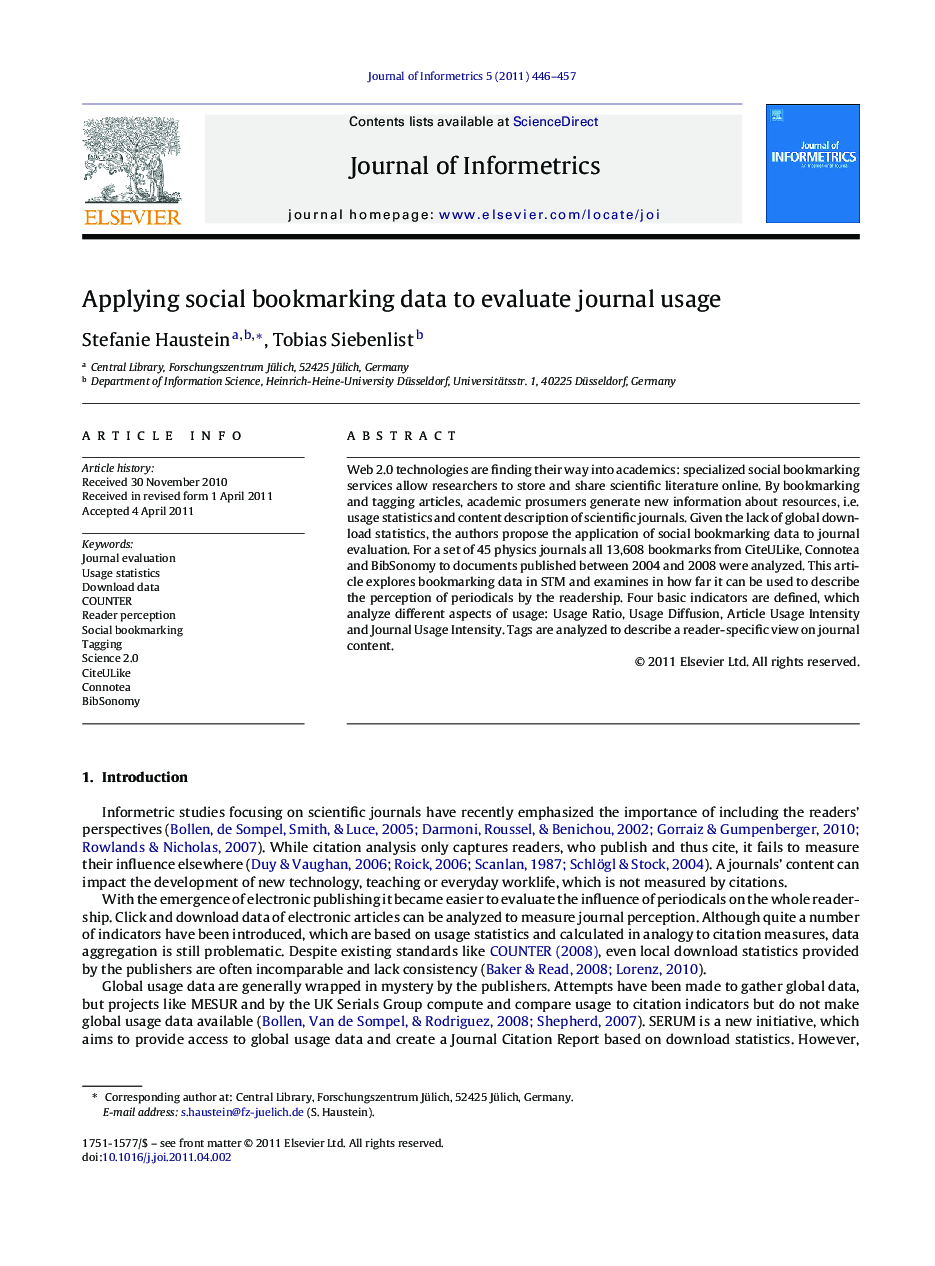| Article ID | Journal | Published Year | Pages | File Type |
|---|---|---|---|---|
| 524072 | Journal of Informetrics | 2011 | 12 Pages |
Web 2.0 technologies are finding their way into academics: specialized social bookmarking services allow researchers to store and share scientific literature online. By bookmarking and tagging articles, academic prosumers generate new information about resources, i.e. usage statistics and content description of scientific journals. Given the lack of global download statistics, the authors propose the application of social bookmarking data to journal evaluation. For a set of 45 physics journals all 13,608 bookmarks from CiteULike, Connotea and BibSonomy to documents published between 2004 and 2008 were analyzed. This article explores bookmarking data in STM and examines in how far it can be used to describe the perception of periodicals by the readership. Four basic indicators are defined, which analyze different aspects of usage: Usage Ratio, Usage Diffusion, Article Usage Intensity and Journal Usage Intensity. Tags are analyzed to describe a reader-specific view on journal content.
► The authors propose to apply usage data from social bookmarking services (BibSonomy, CiteULike and Connotea) to evaluate journal readership. ► Due to ongoing problems with local and the lack of global download data, usage statistics based on bookmarks can be an alternative and publisher independent way to analyze reader perception. ► Data acquisition is described for 168,109 scientific articles published in 45 physics journals between 2004 and 2008. ► Journal indicators based on bookmarking data are introduced.
